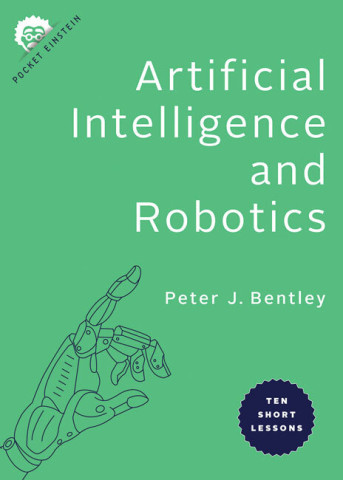
Reviews
Drawing on interviews with researchers pushing the boundaries of AI for the world's benefit and working to make its applications safer and more just, Can We Trust AI? responds with a qualified affirmative.
In Can We Trust AI?, Chellappa explores both the promise and peril of AI. For readers searching for an understanding how AI came to be...Chellappa situates AI in an historical context that is thorough, and thoroughly fascinating. Most refreshing is his current assessment of AI that dispels the hype of AI's world takeover....Chellappa gracefully moves among AI's past, present, and future.
Through honest assessments and engaging quotes, sidebars, and stories, Can We Trust AI? provides an impressive account of this fascinating and controversial discipline. Chellappa, a world- renowned scientist and inventor, has devoted his life's work to the research, development, and applications of artificial intelligence. While he's immersed in its complexities, his book provides an accessible entrée to the subject for readers of all backgrounds who wish to learn more about its advantages, capabilities, and potential dangers.
A first-class tour through the evolution, promise and perils of AI by one of its leading lights. A great book for cutting through both the hype and the fear-mongering surrounding AI.
Rama Chellappa's work on automatic recognition of humans has helped define AI research for four decades. In this book, he carefully addresses the history and future of AI, its compelling applications, including in medicine and autonomous driving, and its ethical challenges, questionable uses, potential biases, and privacy issues. It's a terrific and highly personal read!
Artificial intelligence in the past and present; in research labs and industry; in everyday lives and war zones; in reality and science fiction. By going back and forth, Chellappa challenges us to think about what AI truly means to the world, now and into the future. A must-read book for everyone from early adopters of these technologies to their skeptics.
Having made notable contributions to the field throughout his career, Dr. Chellappa is well positioned to predict what AI is capable of and to recognize its current limitations. In this easy-to-follow and insightful book, he weaves together a cautiously optimistic recounting of pioneering advances in AI with a frank reckoning of its potential shortcomings, along with suggestions for improvements, including greater diversity in academic programs and hiring in the field.
Can we trust AI? Are we safer turning the wheel over to our AI driver than we are driving ourselves? Do face recognition systems strengthen or weaken our society? Rama Chellappa, a renowned researcher in AI and computer vision, has written a delightfully personalized and insightful book that rationally addresses these questions and provides the reader with important historical context on the development of AI over the past half-century. A valuable read for anyone interested in how AI will shape our future.
Chellappa provides a wonderful journey through artificial intel- ligence's origins and experiments, and explains how its advances impact the world we're living in today. He shares his expertise on the intricacies of AI technologies and applications in a simple yet effective way.
Grounded in Dr. Chellappa's decades of experience working in the field of artificial intelligence, Can We Trust AI? provides an excellent overview of how these technologies have evolved over the past five decades and offers a realistic opinion on current capabilities. The narrative also addresses several key issues with current AI systems, including bias concerns and the lack of appropriate regulations to prevent their misuse.
Chellappa shares his encyclopedic knowledge of research and applications of Artificial Intelligence and Machine Learning in a delightfully readable way. This book tackles the controversial issues surrounding AI without the hype, the fear, or the despair of most popular discussions of the subject.
Book Details
Preface
Chapter 1. The Birth and Growth of AI
Chapter 2. Saving Lives with Artificial Intelligence
Chapter 3. The Complexities and Contributions of Facial Recognition
Chapter 4. The Promise of Autonomous
Preface
Chapter 1. The Birth and Growth of AI
Chapter 2. Saving Lives with Artificial Intelligence
Chapter 3. The Complexities and Contributions of Facial Recognition
Chapter 4. The Promise of Autonomous Vehicles
Chapter 5. AI's Futurescape
Acknowledgments
Glossary
Notes
Index






